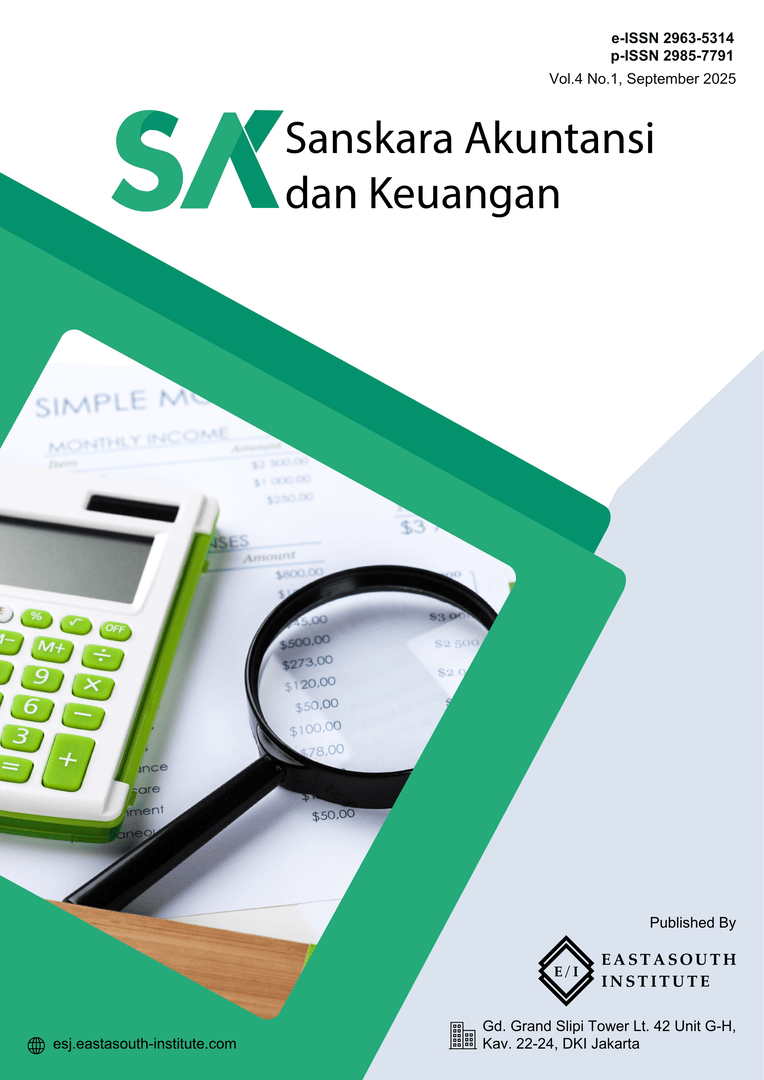Inovasi Kebijakan Inklusi Keuangan Melalui Penyusunan Data Nasional Terpilah Gender (DNTG)
Main Article Content
Abstract
The purpose of this research is to describe best practices and analyze the success of Financial Inclusion Policy Innovation through the Compilation of Gender Disaggregated National Data (DNTG). The method used in this research is descriptive qualitative. Data collection techniques used seminars and literature studies. The types of data collected are primary data and secondary data. The criteria from Prasojo's theory, used to measure the success of innovation are impact, cooperation, sustainability, and leadership. The results of this study found that the impact of innovation can provide useful information in government policies and private sector practices and can improve financial literacy for women and access to financial services. Cooperation and coordination between ministries/institutions, financial services (banks), financial services (non-banks), fintech companies, and Islamic financial institutions. The DNTG will continue and be updated regularly so that it can be used as a reference by various stakeholders. The Coordinating Ministry for Economic Affairs continues to be committed to providing great opportunities for access to formal finance for women, in addition to gender mainstreaming in the medium-term development plan.
Article Details

This work is licensed under a Creative Commons Attribution-ShareAlike 4.0 International License.
References
Abdussamad, Z. (2022). Buku Metode Penelitian Kualitatif. In OSF Preprints. https://doi.org/https://doi.org/10.31219/osf.io/juwxn
Akers, E. J., & Grafton, C. (2006). A study of the adoption of digital government technology as public policy innovation in the American states. ProQuest. https://www.proquest.com/dissertations-theses/study-adoption-digital-government-technologyas/docview/305360820/se-2?accountid=63730
Almuaythir, S., Singh, A. K., Alhusban, M., & Daoud, A. O. (2024). Robotics technology: catalyst for sustainable development—impact on innovation, healthcare, inequality, and economic growth. Discover Sustainability, 5(1), 486. https://doi.org/10.1007/s43621-024-00744-y
Amnas, M. B., Selvam, M., & Parayitam, S. (2024). Fintech and financial inclusion: Exploring the mediating role of digital financial literacy and the moderating influence of perceived regulatory support. Journal of Risk and Financial Management, 17(3), 108. https://doi.org/10.3390/jrfm17030108
Bansal, D., & Kaur, L. (2024). Financial literacy and gender gap: a study of Punjab state of India. Journal of Social and Economic Development, 26(1), 77–101. https://doi.org/10.1007/s40847-023-00253-0
BPK RI. (2020). Peraturan Presiden (Perpres) Nomor 114 Tahun 2020 tentang Strategi Nasional Keuangan Inklusif. BPK RI. https://peraturan.bpk.go.id/Details/154566/perpres-no-114-tahun-2020
Edquist, C. (2015). Innovation-related Public Procurement as a Demand-oriented Innovation Policy Instrument. ProQuest. https://www.proquest.com/working-papers/innovation-related-public-procurement-asdemand/docview/1767747111/se-2?accountid=63730
Horobet, A., Dalu, M. A., Marinescu, I., Belascu, L., Dumitrescu, S. A., & Kostakis, I. (2025). Financial inclusion, technology, and income inequality in Europe. Amfiteatru Economic, 27(68), 93–110.
Ifa, F., & Darmawan, M. S. (2025). Inovasi Kebijakan Neraca Komoditas Beras Melalui Sistem Nasional Neraca Komoditas (SINAS-NK). Jurnal Good Governance, 1–18.
Jia, J., Jia, C., Zhang, X., Ren, P., Chen, M., & Xu, J. (2024). The impact of internet medical service on rural gender inequality in health opportunity: a cross-sectional study. BMC Public Health, 24(1), 3093. https://doi.org/10.1186/s12889024-20575-w
Kuznicka-Blaszkowska, D., & Jablonski, M. (2024). Information on Gender Identity as Personal Data under EU and US Data Protection Models. Bialostockie Studia Prawnicze, 29(3), 207–220. https://doi.org/10.15290/bsp.2024.29.03.11
Le Quoc, D. (2024). The relationship between digital financial inclusion, gender inequality, and economic growth: dynamics from financial development. Journal of Business and Socio-Economic Development, 4(4), 370–388. https://doi.org/10.1108/jbsed-122023-0101
Leviastuti, A., Santika, T. D., & Prasetyo, I. (2023). Financial Literacy Education for Women: A Novel Approach based on Social Media Platform. Journal of Social Entrepreneurship Theory and Practice, 2(1), 42–54. https://doi.org/10.31098/jsetp.v2i1.991
Li, Y., Sun, G., Gao, Q., & Cheng, C. (2023). Digital financial inclusion, financial efficiency and green innovation. Sustainability, 15(3), 1879. https://doi.org/10.3390/su15031879
Mpofu, F. Y. (2024). Industry 4.0 in finance, digital financial services and digital financial inclusion in developing countries: Opportunities, challenges, and possible policy responses. International Journal of Economics and Financial Issues, 14(2), 120–135. https://doi.org/10.32479/ijefi.15081
Nandy, A. (n.d.). Gender Data : Grammar of gender and number. 1–4.
Otekunrin, A. O., Chinoda, T., & Matowanyika, K. (2021). The nexus between economic growth, financial development, financial inclusion and financial innovation in Africa. Asian Economic and Social Society. https://doi.org/10.18488/JOURNAL.AEFR.2021.118.672.681
Prasojo, E., Kurniawan, T., & Holidin, D. (2007). Refomasi dan Inovasi Birokrasi: Studi di Kabupaten. PTKPNF Depdiknas.
Richards, N., Pandolfelli, L., Bouziani, B., Ofosu‐Baadu, B., & Carter, K. (2022). The role of administrative data in gender statistics: Supporting inclusive development for women and girls. Journal of International Development, 34(2), 349–378. https://doi.org/10.1002/jid.3600
Sun, H., Luo, Y., Liu, J., & Bhuiyan, M. A. (2024). Digital inclusive finance, R&D investment, and green technology innovation nexus. Plos One, 19(1), 1–20. https://doi.org/10.1371/journal.pone.0297264
Sun, J., & Zhang, J. (2024). Digital financial inclusion and innovation of MSMEs. Sustainability, 16(4), 1404. https://doi.org/10.3390/su16041404
Sururi, A. (2017). Inovasi Kebijakan dalam Perspektif Administrasi Publik Menuju Terwujudnya Good Public Policy Governance. Spirit Publik: Jurnal Administrasi Publik, 12(2), 14–31.
Waldman, A. E. (2023). Gender data in the automated administrative state. Columbia Law Review, 123(8), 2249– 2320. https://doi.org/10.2139/ssrn.4358437
Waldman, A. E. (2024). Opening the gender box: Legibility dilemmas and gender data collection on US state government forms. Law & Social Inquiry, 49(4), 2021–2051. https://doi.org/10.1017/lsi.2023.44
Wani, I. U., Alharthi, M., Khanday, I. N., Subhan, M., & Al-Faryan, M. A. S. (2024). Exploring the complementary interaction between financial inclusion and gender equality on economic growth: fresh evidence from developing countries. Cogent Economics & Finance, 12(1), 2365585. https://doi.org/10.1080/23322039.2024.2365585
Yang, Y., Shi, S., & Wu, J. (2022). Digital financial inclusion to corporation value: The mediating effect of ambidextrous innovation. Sustainability, 14(24), 16621. https://doi.org/10.3390/su142416621

